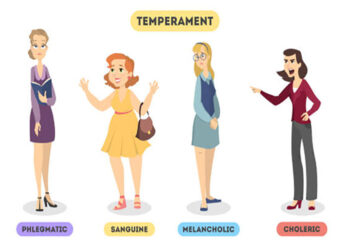
Despite the common portrayal of love at first sight in movies, we keep asking ourselves the same question, “Is love at first sight real?”. What exactly is love at first sight, and how do you know if what you are experiencing is true love?
According to a poll conducted by CBS News, 56% of Americans believe in love at first sight, while 41% do not believe in it. In a more recent survey of 1,005 people, exactly half believed in love at first sight, while the other half did not. By gender, 51% of women believed in love at first sight, while 49% of men believed in love at first sight; the rest did not.[1]Love at First Sight – 1-800 Contacts
Whether you are on the side of those who believe in love at first sight or not, we all want to understand what love at first sight actually means, if it truly exists, or if it is not just lust or a mere stroke of attraction.
What Does Love at First Sight Mean?
The phrase “Love at first sight” is believed to have been coined by the influential English playwright and poet, Christopher Marlowe in his poem “Who Ever Lov’d, that Lov’d Not at First Sight”. In this poem, Marlowe attempts to justify the notion that love at first sight is the only kind of true love because the universe and fate will it to be. He implied that intentional love which is not initiated by fate, the universe tears apart over time.
Love at first sight is a feeling of strong attraction where an individual feels an undeniable pull towards the other person, with an immediate sense of emotional connection with them. Many people describe love at first sight as a gut feeling or instinctual recognition of the rightness of the connection.
Experiencing love at first sight makes you feel like you were meant to meet each other at a point like this. It might manifest with the same emotion ‘feelings of love’–increased heart rate, fluttering sensation in the stomach (butterfly feeling), shortness of breath, and an intense attraction to the other person.
Summarily, love at first sight is the intense and immediate emotional connection that occurs when two individuals meet, characterized by an overwhelming attraction that goes beyond the surface-level qualities or impressions about the person and can create a potential for a deeper romantic bond.
Is Love At First Sight Real?
While a good proportion of people have experienced what seems like love at first sight, especially in how the feeling is described, several questions arise concerning the “reality” of this concept. First, we want to question if the feeling is real and if everyone experiences it. Secondly, we question if that feeling of love at first sight is true love and not some mere infatuation and if this feeling guarantees a long-lasting relationship.
In the following section, we will explore the science behind the feeling of love at first sight to answer the question of whether it is real and if people experience it.
Science Behind Love At First Sight
Love at first sight is based on physical appearance as the primary modality of perception, including facial features, body language, and overall attractiveness/beauty. Certain features in a person can instantly create a sense of attraction to that person which can manifest as love at first sight.
According to a team of scientists led by Dr. Helen Fisher at Rutgers, romantic love can be broken down into three categories: lust, attraction, and attachment. Each category is characterized by its own set of hormones stemming from the brain.
Lust was described as a desire for sexual gratification. Attraction involves the brain pathways that influence “reward-seeking” behavior, while attachment is described as the predominant factor for long-term relationships which mediates friendships, bonding, social cordiality, and other intimacies.[2]Helen Fisher. Lust, Attraction, and Attachment in Mammalian Reproduction (PDF)
Of the three descriptions of romantic love by Helen Fisher, attraction is the one that comes closest to our description of love at first sight. Lust makes us fantasize about sex with someone because of certain physical features we see in them, a feeling mediated by the gonadal hormones–estrogen and testosterone. However, attraction thrives on one’s derivation of reward or pleasure in being close to someone and is mediated by dopamine and norepinephrine.[3]Catherine Wu. Love, Actually: The science behind lust, attraction, and companionship – Havard Science in the News
Studies have shown that visual perception of certain features even in an unfamiliar face can initiate the release of high levels of dopamine and norepinephrine from the brain.
According to one such study, there was increased brain activity in the ventral striatum, a region associated with dopaminergic secretion, of the viewer when meeting eye-to-eye with an unfamiliar face that elicits in the viewer some perceived attractiveness. This dopaminergic region is strongly linked to reward prediction, meaning the individual would derive pleasure from initiating social and more intimate interactions with the person they find attractive.[4]Reward value of attractiveness and gaze – Nature
Other hormones like endorphins, serotonin, oxytocin, and norepinephrine, are expressed in the same region with increased brain activity. Though to a lesser extent compared to dopamine release, these are also involved in the overall experience of love at first sight of some who have peculiar features of attractiveness to an individual.[5]Neurochemical organization of the ventral striatum’s olfactory tubercle. Cansler. 2020 – Journal of Neurochemistry
This scientific evidence may show that the experience of love at first sight, in the way it is been described, may be relatable to everyone. Neurochemical responses in the brain often characterize most human emotional and psychological reactions.
Is Love At First Sight True Love?
Having offered a tangible explanation to the question of love at first sight being real or not, we may also want to know if this phenomenon qualifies to be called “love”. Does it predict the long-term?
When we talk about love, we try to distinguish it from other related entities like lust, infatuations, and simple attraction which are usually more fleeting. Helen Fisher made this distinction clear in her categorization of romantic emotions, describing lust as a desire for sexual gratification.[6]Ibid. Helen Fisher…
Consistent with Helen Fisher’s descriptions, Justin Lehmiller, PhD, gave a direct difference between love and lust. Justin, a social psychologist and author of “Tell Me What You Want: The Science of Sexual Desire and How It Can Help You Improve Your Sex Life.”, defines lust as a state of overwhelming sexual and physical attraction to another person, and describes love as a much broader concept that includes deeper emotional connection, and usually, a desire for long-term commitment. Justin’s definition of love echoes Helen’s description of attachment as it differs from lust and normal attraction[7]How to Tell the Difference Between Love and Lust: 11 Signs – Health Line
In this regard, do we say love at first sight is mere lust or simple attraction, or it could be a starting point for a long-term commitment or bond between both parties?
While the exact statistics of the proportion of marriages that started as love at first sight encounters are hard to come by, love at first sight can impact the quality of romantic relationships because early memories of the experience have strong influence at later stages of the relationship.
Also, in comparison with love between married couples, the components of romantic love (eros, intimacy, commitment, and passion) were found to be lower in love at first sight. However, love at first sight is a strong initial attraction that one could describe as love, either in the moment or retrospectively after it may have metamorphosed into marriage.[8]Zsok, F., Haucke, M., De Wit, C. A., & Barelds, D. P. H. (2017). What kind of love is love at first sight? Empirical evidence. Personal Relationships, 24(3), 869-885. … Continue reading
Does Love At First Sight Guarantee a Lasting Relationship?
Though the experience of love at first sight can have a strong influence on the sustainability of the relationship in the long run, physical attraction or attachment alone, which are cardinal to love at first sight, can guarantee a long-lasting relationship. Only mutual commitment can guarantee a lifelong relationship.
Love at first sight may be fleeting and might fade away particularly if it is one-sided and if it remains one-sided. While the initial dopamine rush might be enough to keep you attracted and attached, it is not enough to sustain the relationship beyond those moments. Knowing that the other person also wants you, or is willing to communicate and get closer to you, can make the attachment feel stronger over time.
Dr. Dan Lieberman tells Bustle, “Once you’re in a relationship, that dopamine excitement fades and eventually stops. If you are going to stay attached, you’ll have to find a reason beyond the dopamine thrill of the new. Typically, that’s choosing to appreciate your partner in the here and now.” This is one clear reason why love at first sight does not guarantee the success of any relationship.
It takes time to love someone deeply. Love at first sight is likely an expression of interest in someone but it still requires time for it to metamorphose into love, or true or compassionate love as it may be referred to.
While there is no definitive time frame for deep love to develop, a few studies have given an average of 3-4 months. During this time, one begins to seek motivation or reasons beyond the initial affection and attraction.[9]How long to fall in love: What research says – Medical News Today
As the dopamine thrill subsides, oxytocin and vasopressin begin to take over. Oxytocin shares connections with the mesolimbic dopaminergic neurons, and is regarded as the hormone of bonding, love, and social connection. Therefore, with a decline in the hormone of motivation and reward, dopamine, oxytocin, and vasopressin start taking the lead in establishing bonds, love, and strong connections in the relationship.[10]Oxytocin and social motivation – ScienceDirect
Bonding, love, and social connection require mutual commitment to form. This is why even though love at first sight may play in role in the longevity of a relationship, commitment is a more important factor in all romantic relationships that last.
Final words
Love at first sight is a feeling of attraction to an unfamiliar face or person who has features that instinctively attract us. On the aspect of love at first sight being ‘real’, science has shown that it is an experience humans experience as social, biological, and emotional beings.
Whether love at first sight qualifies as “real love” that lasts is often a retrospective conclusion, however, mutual commitment is what is required to prospectively push it beyond mere infatuation and attraction. Even though it exists, love at first sight, in itself, does not guarantee a successful relationship but it can be a great starting point for successful relationships.
Lastly, the absence of an occurrence of love at first sight does not negate the success of any relationship. People can get attracted to people they once weren’t so attracted to. In essence, attraction can happen at any point even when it does not occur at first sight.
References
| ↑1 | Love at First Sight – 1-800 Contacts |
|---|---|
| ↑2 | Helen Fisher. Lust, Attraction, and Attachment in Mammalian Reproduction (PDF) |
| ↑3 | Catherine Wu. Love, Actually: The science behind lust, attraction, and companionship – Havard Science in the News |
| ↑4 | Reward value of attractiveness and gaze – Nature |
| ↑5 | Neurochemical organization of the ventral striatum’s olfactory tubercle. Cansler. 2020 – Journal of Neurochemistry |
| ↑6 | Ibid. Helen Fisher… |
| ↑7 | How to Tell the Difference Between Love and Lust: 11 Signs – Health Line |
| ↑8 | Zsok, F., Haucke, M., De Wit, C. A., & Barelds, D. P. H. (2017). What kind of love is love at first sight? Empirical evidence. Personal Relationships, 24(3), 869-885. https://doi.org/10.1111/pere.12207 |
| ↑9 | How long to fall in love: What research says – Medical News Today |
| ↑10 | Oxytocin and social motivation – ScienceDirect |

















